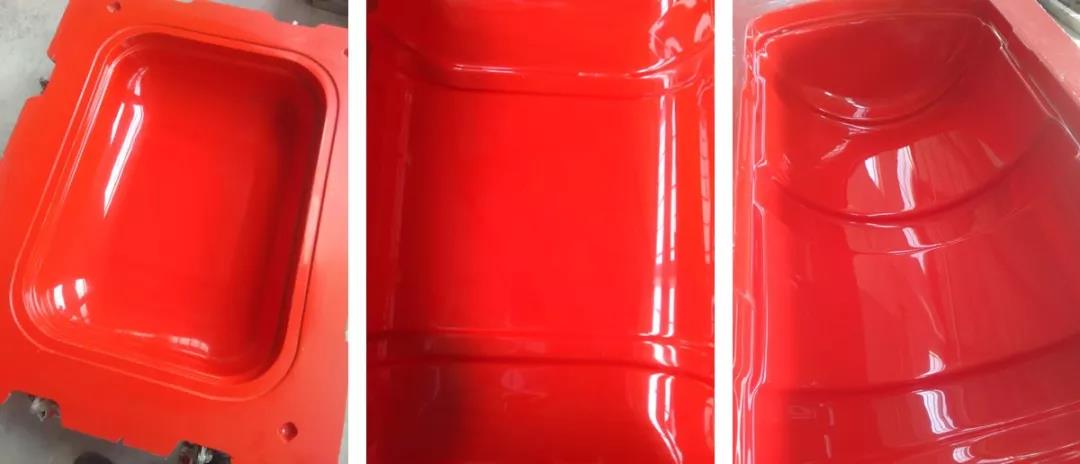If you want to reduce the problem of gelcoat, it is very valuable to take a close look at the experience of some people who have been there, and summarize the do’s and don ‘ts.
Want to do
Establish the correct gelcoat type before starting work, ensure complete and thorough molds are ready for use, and stir each drum thoroughly but slowly (to prevent air from trapping). Before starting, make sure the gelcoat and mold are at a temperature between 16-30° C. Ideally, the mold temperature should be 2-3° C higher than the gelcoat temperature. It then begins to cure on contact, making the surface smoother.
Keep the relative humidity below 8O%. Even at elevated temperatures, the higher concentration of water vapor in the working area can lead to inadequate curing. It is also important to prevent water from condensing on the surface of the mold.
Make sure the mold surface is properly treated with release agent. Do not use silicone release agent. Water-based products must be completely dried before gelcoat is applied. Gelcoat can be used immediately. Do not add solvents such as acetone. Styrene up to 2% May be added if the application requires a lower viscosity.
The catalytic content of MEKP was 2%. If the catalyst content is too high or too low, insufficient curing will reduce the weather resistance and water resistance of gelcoat.
If pigment is added, ensure colour fastness and compatibility before use. Add the recommended amount of pigment, accurately weigh and mix using low shear equipment.
When spraying, the thickness should be increased to the desired level within 3 or times to release fine bubbles.
If gelcoat is sprayed, make sure to evenly apply a gel coating of 400 to 600 microns (equal to 550-700 grams per square meter) using the correct nozzle setting and spray pressure and distance. Gelcoat with a smaller thickness may not cure well enough, while gelcoat with a larger thickness may run, crack and develop pores. Use a gauge to check for correct thickness and make sure molds are well ventilated. Styrene monomer vapor will prevent polymerization and due to its high specific gravity tends to remain in the lower part of the mold as soon as the gelcoat is fully cured (a tight film, but feels sticky), the spare layer is applied.
Don’t
Do not entrap excessive air during catalyst and pigment mixing
Do not use high-shear mixing equipment, which may result in thixotropic damage, pigment separation/flocculation, drainage and air entrainment.
Do not dilute gelcoat with a solvent other than styrene monomer. When adding styrene, the maximum content should not exceed 2%.
Do not pour gelcoat directly onto the mold before brushing (this will create shadows).
Do not apply gel time too fast, this does not allow residual air to escape.
Do not use over or under catalyst or pigment.
Do not use silicone wax as they can cause fisheye.
ABOUT US
hebei Yuniu Fiberglass Manufacturing Co., LTD. We mainly produce and sell e-type fiberglass products, such as fiberglass roving, fiberglass chopped silk, fiberglass chopped felt, fiberglass gingham, needled felt, fiberglass fabric and so on.If any needs, please contact us freely.
Suggestions for large mold products
Due to the high cost involved in gel coating of large moulds such as ship hulls and decks, it is recommended to manufacture with lots of sufficient size that have been pre-mixed by the manufacturer because the pigment is ground directly into the gel coating during controlled production.
Whichever method is used, the same expected materials (including initial laminate, catalyst dosage, mixing art, workshop conditions and operator) must be used to produce the small test panels before starting mold production. The surface can then be inspected for defects and surface gelcoat hardness checked using a Barcol meter before production begins.
Post time: Dec-28-2021




